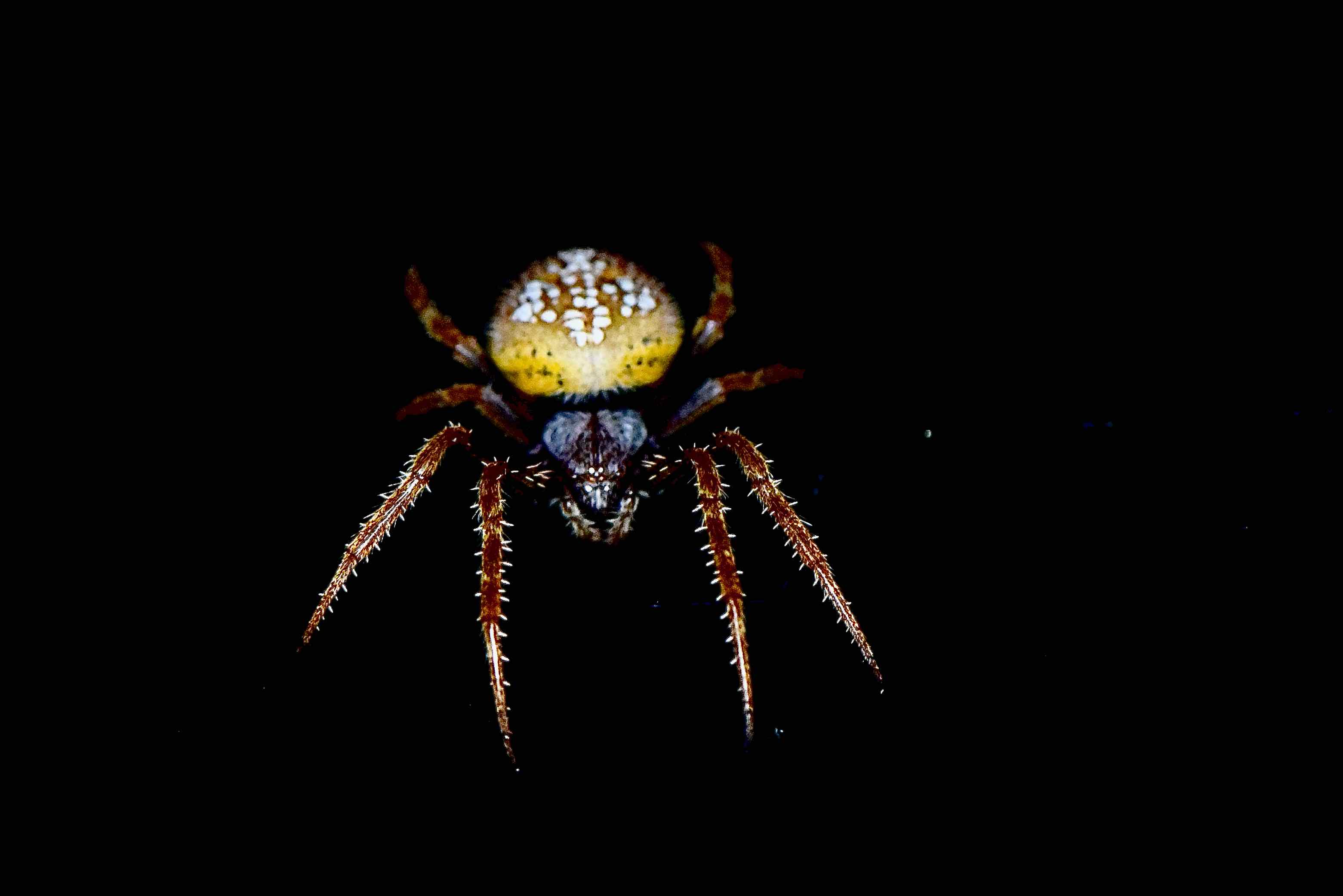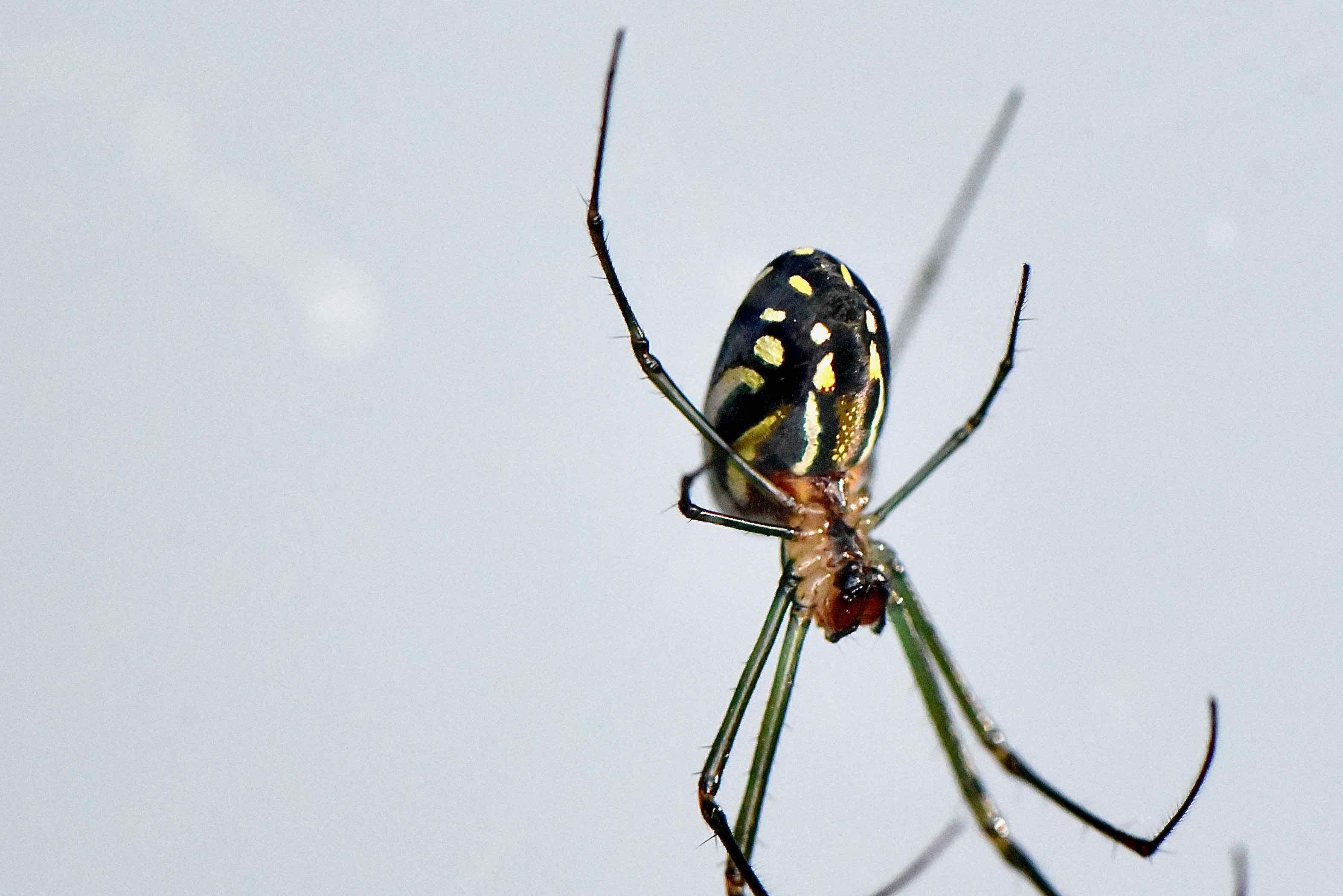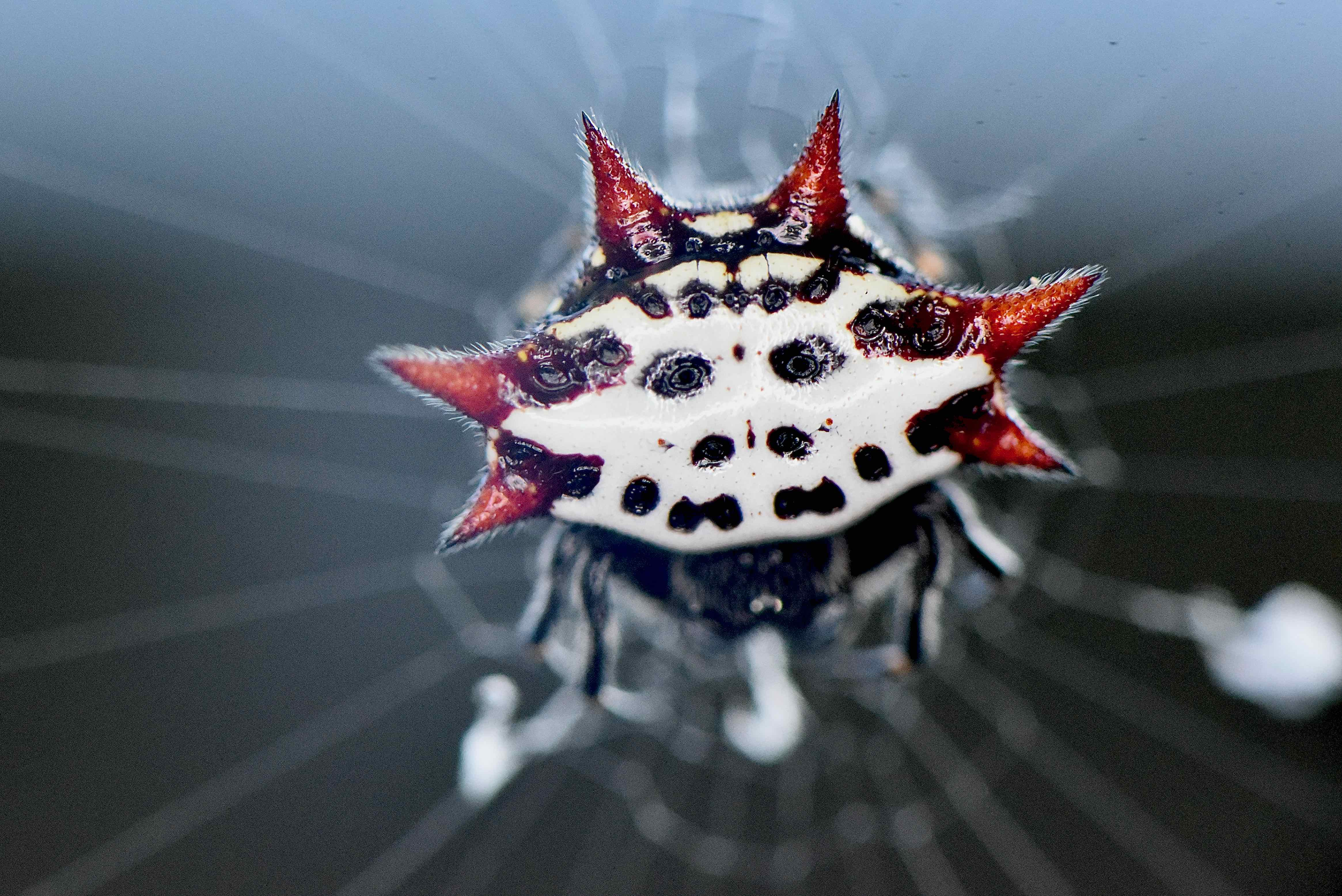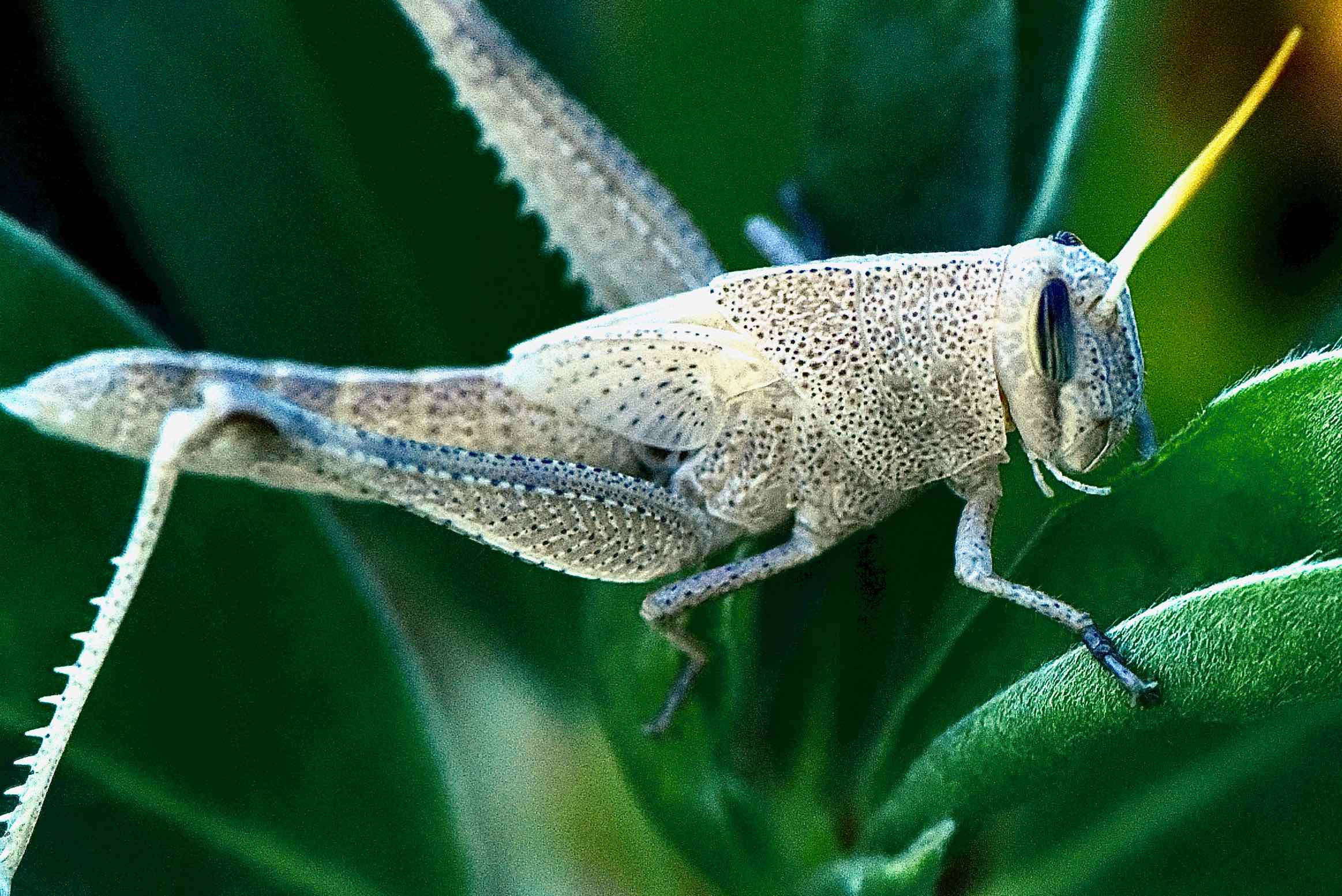
It was a weird year for us, 2023 was. Outside of a trip to Blue Spring State Park, circumstances forced us to focus our attention on our backyard figuratively and literally. New looks at old places, new tools to look at world a little differently, new creatures, old creatures in a new light. Spiders literally in our backyard, grasshopper species we've never seen before munching away on the leaves of our favorite wildflower. Honeybees ignoring us while going about the business of collecting nectar from one of the most familiar flowers native to South Florida. And more. The photos we've assembled for our look back on 2023 all represent that theme in one way or another.
Other than one taken at Blue Spring State Park, all the photos were shot at places roughly within a 10-mile radius of our home, at places we've visited dozens of times. As we did last year, these photos aren't necessarily our best but rather our favorites for one reason or another.
As for the guy above, we'll get to him in a bit. With that, we begin our look back at the past year.
Other than one taken at Blue Spring State Park, all the photos were shot at places roughly within a 10-mile radius of our home, at places we've visited dozens of times. As we did last year, these photos aren't necessarily our best but rather our favorites for one reason or another.
As for the guy above, we'll get to him in a bit. With that, we begin our look back at the past year.
Lake Ida Park: New Look at an Old Haunt
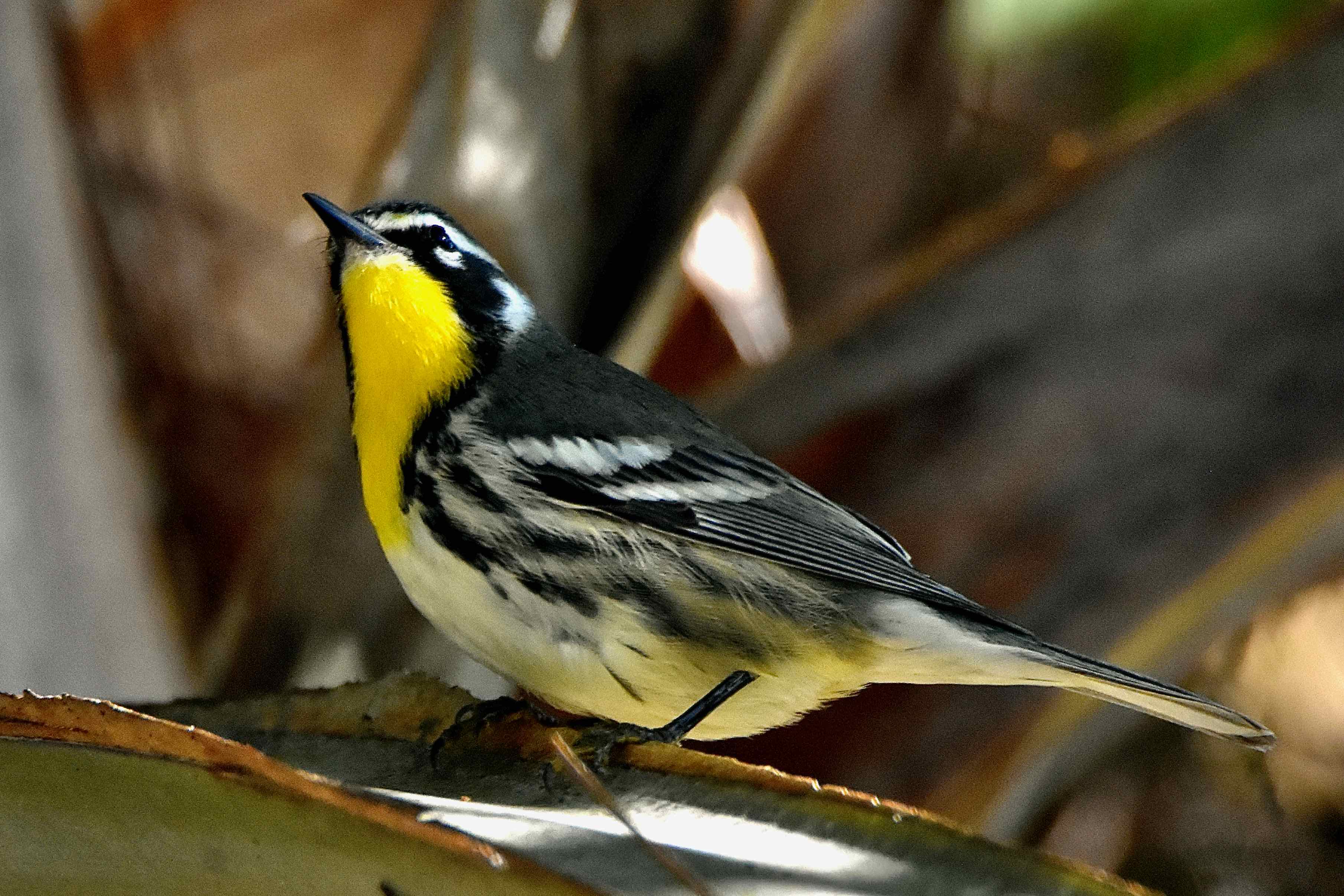
There is a saying that familiarity breeds contempt. We literally live down the street from Lake Ida County Park, and have driven by it thousands of times. Contempt certainly isn't the right word. Maybe complacency. Maybe we've just taken it for granted because it is so close, so familiar. A place for picnics, to walk your dog, to wet a line in hopes of hooking a peacock bass. Birding? No, not seriously. But that changed this fall, when circumstances made us regulars at the park.
The variety of birds we saw was truly impressive, like this yellow-throat warbler, which we photographed in early November. We spotted this guy before we could get out of the car. Thing is, we've never really had much luck when it comes to spotting migratory visitors during the fall. But this year we saw American redstarts in abundance, prairie warblers, yellow rumps, even a spot-breasted oriole. That's in addition to a lengthy list of regulars like mottled ducks, ospreys, limpkins, royal terns, Caspian terns, brown pelicans, great blues, little blues, greens and a whole lot more.
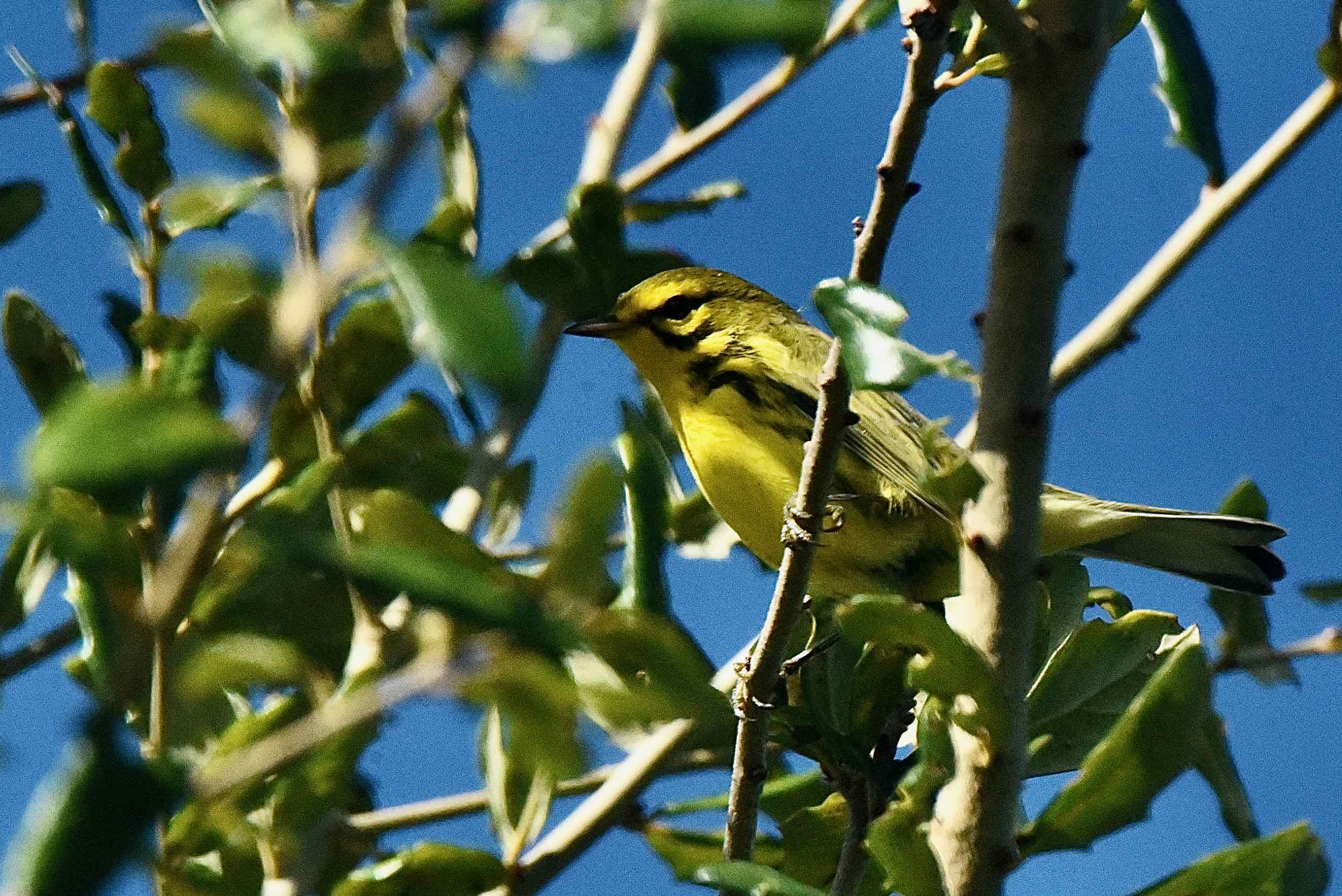 Prairie warbler at Lake Ida Park
Prairie warbler at Lake Ida Park
The variety of birds we saw was truly impressive, like this yellow-throat warbler, which we photographed in early November. We spotted this guy before we could get out of the car. Thing is, we've never really had much luck when it comes to spotting migratory visitors during the fall. But this year we saw American redstarts in abundance, prairie warblers, yellow rumps, even a spot-breasted oriole. That's in addition to a lengthy list of regulars like mottled ducks, ospreys, limpkins, royal terns, Caspian terns, brown pelicans, great blues, little blues, greens and a whole lot more.
 Prairie warbler at Lake Ida Park
Prairie warbler at Lake Ida ParkFearless Cranes and curious deer
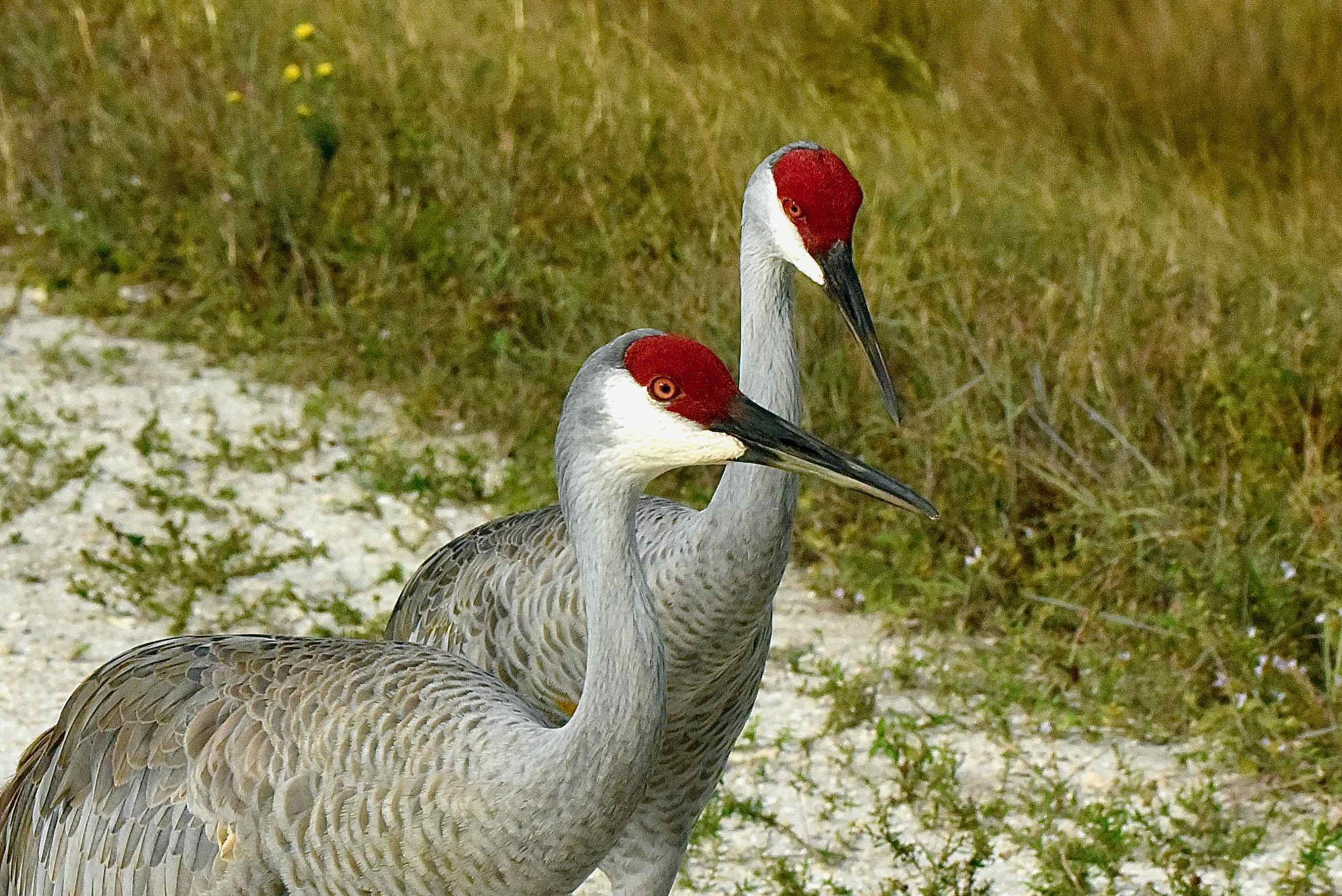
The Arthur R. Marshall Loxahatchee National Wildlife Refuge is among our regular spots. When we go, we always hit the Cypress Swamp Boardwalk, then hike along the Marsh Trail on the south side of Lee Road, which cuts through the refuge from U.S. 441 to the boat launch. One December afternoon, we decided to hike as far north as we could go along the Levee Trail. As we walked along, we noticed a pair of sandhill cranes walking toward us. We stopped, grabbed out camera and fired off a few frames. We stood there and watched, curious to see what the cranes would do as they neared us. Turns out nothing. They just kept walking toward us totally unintimidated by our presence and passed us so close we could have reached out and touched them.
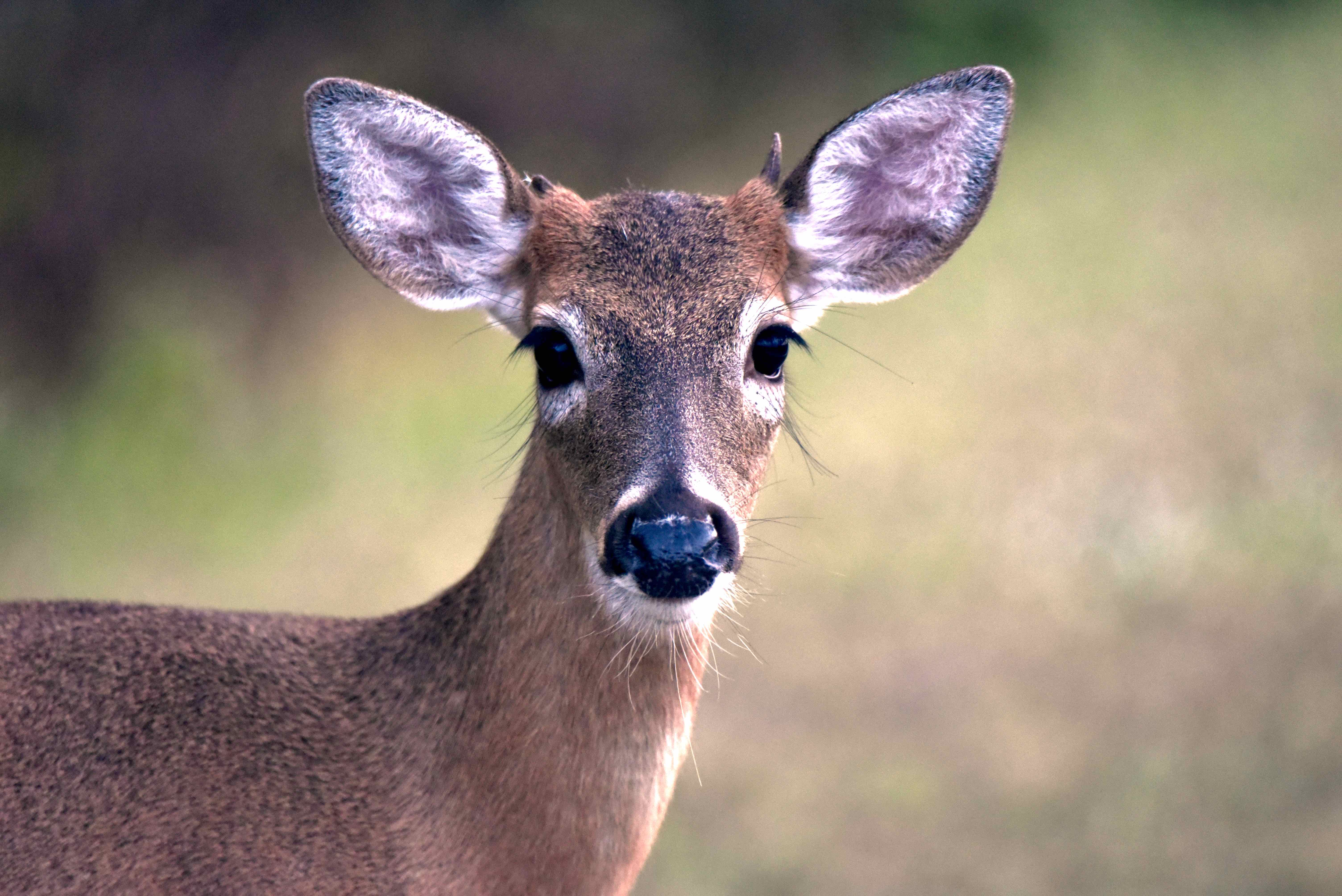 We had heard there were deer at Loxahatchee, but never saw one in the decade or so that we've been visiting refuge. That changed during our hike when we decided to cut across from the levee and work our way south along the Arthur R. Marshall Trail. A hiker coming from the south alerted us to the presence of the deer but we were disappointed when we saw none. We had all but given up hope of seeing them when a small herd came into view. They continued south, browsing as they walked, turning, looking at us almost curious about us as we were about them. We kept a distance away, me firing my camera in hopes of getting at least one usable shot as the evening rapidly morphed into night. One usable frame is what I got. This one.
We had heard there were deer at Loxahatchee, but never saw one in the decade or so that we've been visiting refuge. That changed during our hike when we decided to cut across from the levee and work our way south along the Arthur R. Marshall Trail. A hiker coming from the south alerted us to the presence of the deer but we were disappointed when we saw none. We had all but given up hope of seeing them when a small herd came into view. They continued south, browsing as they walked, turning, looking at us almost curious about us as we were about them. We kept a distance away, me firing my camera in hopes of getting at least one usable shot as the evening rapidly morphed into night. One usable frame is what I got. This one.
 We had heard there were deer at Loxahatchee, but never saw one in the decade or so that we've been visiting refuge. That changed during our hike when we decided to cut across from the levee and work our way south along the Arthur R. Marshall Trail. A hiker coming from the south alerted us to the presence of the deer but we were disappointed when we saw none. We had all but given up hope of seeing them when a small herd came into view. They continued south, browsing as they walked, turning, looking at us almost curious about us as we were about them. We kept a distance away, me firing my camera in hopes of getting at least one usable shot as the evening rapidly morphed into night. One usable frame is what I got. This one.
We had heard there were deer at Loxahatchee, but never saw one in the decade or so that we've been visiting refuge. That changed during our hike when we decided to cut across from the levee and work our way south along the Arthur R. Marshall Trail. A hiker coming from the south alerted us to the presence of the deer but we were disappointed when we saw none. We had all but given up hope of seeing them when a small herd came into view. They continued south, browsing as they walked, turning, looking at us almost curious about us as we were about them. We kept a distance away, me firing my camera in hopes of getting at least one usable shot as the evening rapidly morphed into night. One usable frame is what I got. This one. Get in Close

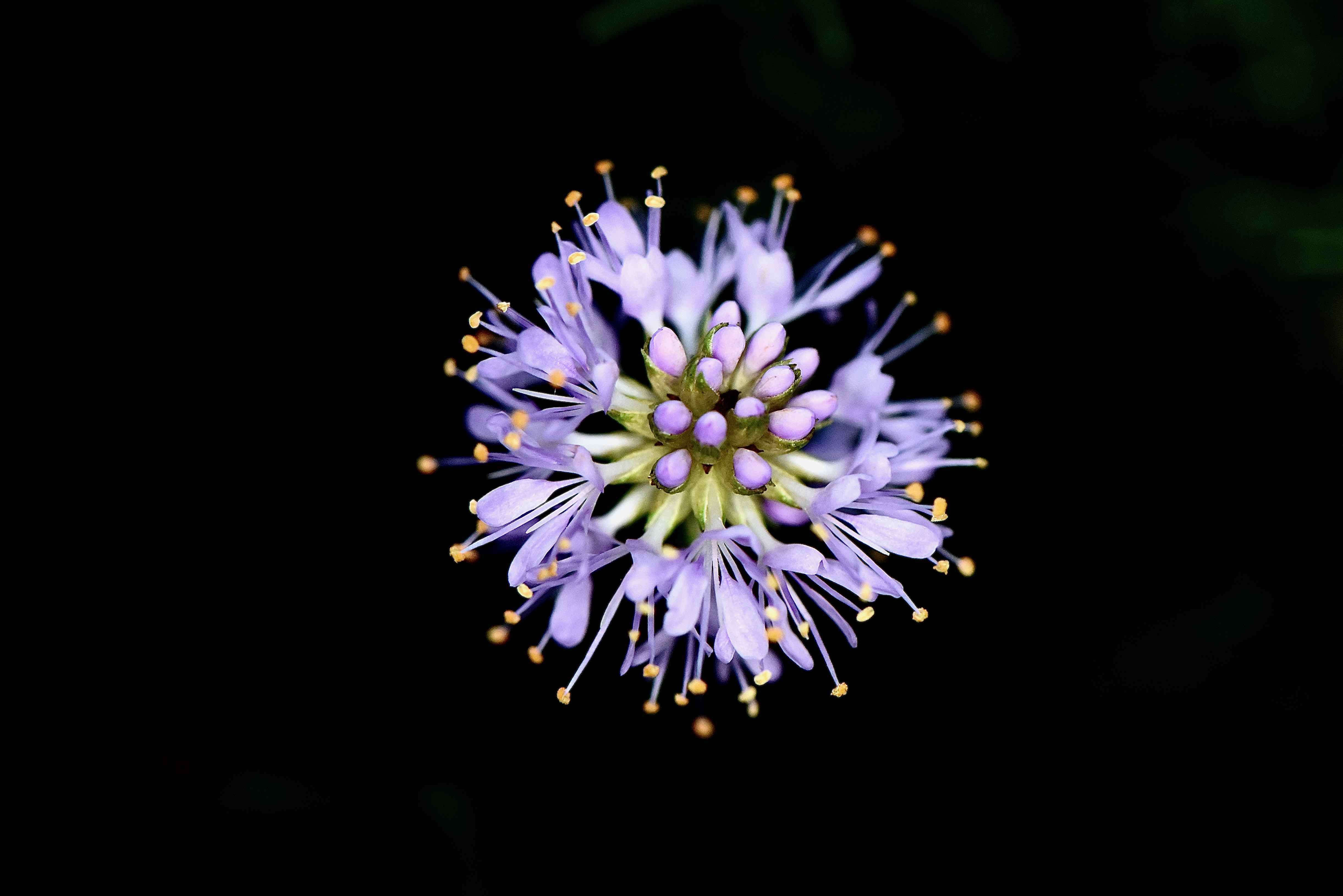
The above photo is Feay's palafox; the second is Feay's prairie clover, which is not a clover and not found on the prairie, but that's neither here nor there. It's a rather common wildflower, not exactly eyecatching, but not ugly either. We use a 105 mm Nikon micro lens with a ring light to get a closer look at the flower that reveals some of its details. The result, we think, is a pretty cool photo that shows off the hidden beauty of the flower. Photograph taken at Yamato Scrub Natural Area in Boca Raton.
By the way, the Feay in question is William T., a 19th century botanist who explored the Southeast and described many of the plants he found.
By the way, the Feay in question is William T., a 19th century botanist who explored the Southeast and described many of the plants he found.
Small Creatures, Big Looks

You go to photograph a flower — in this case the beautiful blossom of narrowleaf silkgrass — and you get lucky when a honeybee decides it wants to stop by to check out its nectar. We normally tend to give space to things with stingers but we decided that this was too good of an opportunity to pass up so we crouched in as close as we could get. This photo was the result.
Below is the guy at the top of the page, a mischievous bird grasshopper. We found him on the same hike as the photo above, sitting on the leaves of skyblue lupine along the Skyblue Lupine Trail in Yamato Scrub Natural Area. Same deal as with the bee, we wanted to get in as close as possible without scaring him off. The photo below is a different frame than the one above, this one enlarged slightly more than the one at the top of the page.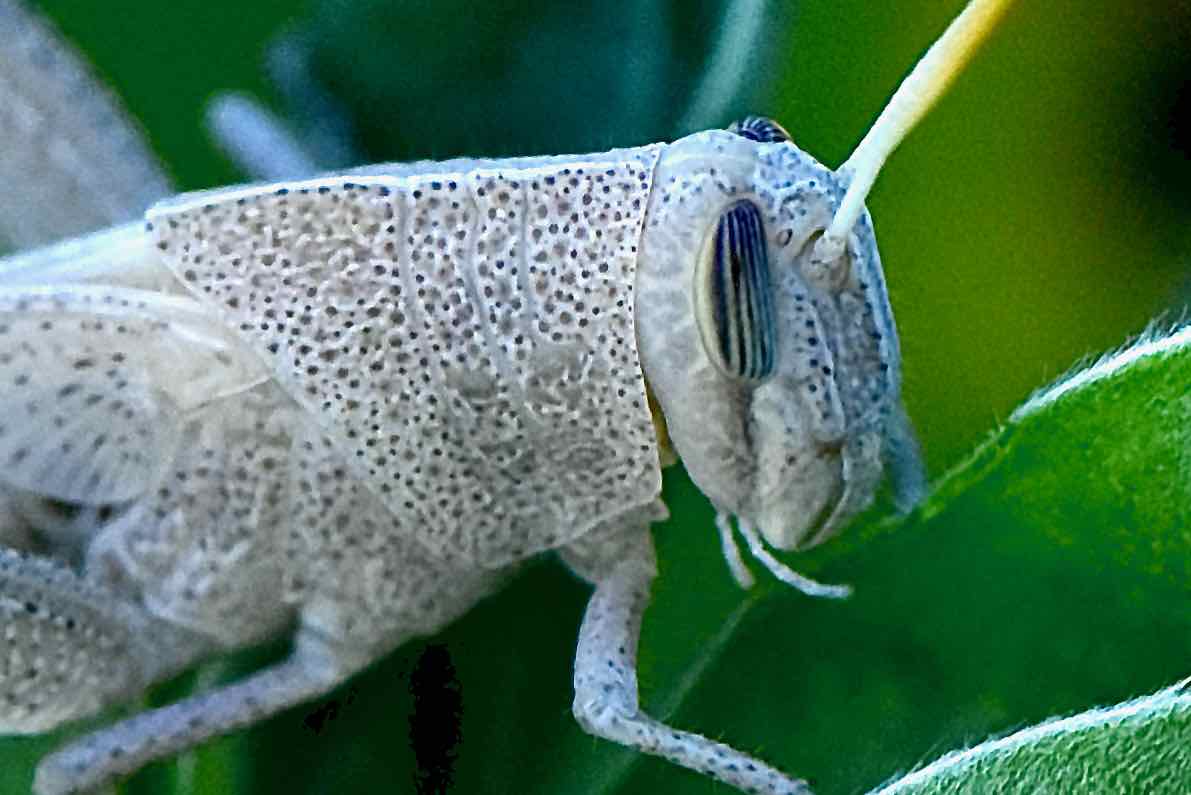
Below is the guy at the top of the page, a mischievous bird grasshopper. We found him on the same hike as the photo above, sitting on the leaves of skyblue lupine along the Skyblue Lupine Trail in Yamato Scrub Natural Area. Same deal as with the bee, we wanted to get in as close as possible without scaring him off. The photo below is a different frame than the one above, this one enlarged slightly more than the one at the top of the page.

A Day at the Beach
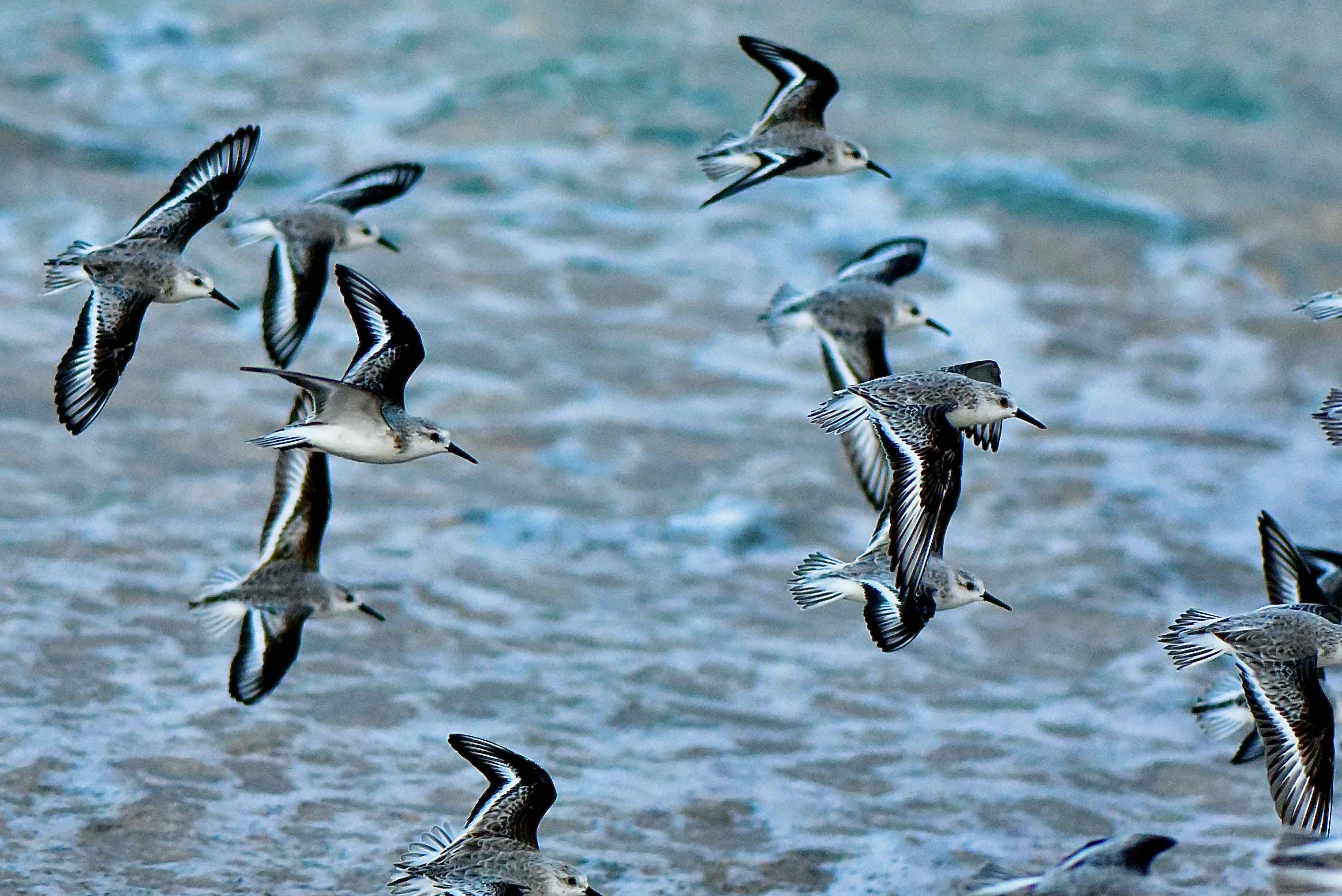
Sanderlings are probably the most common bird you'll find at the beach. You see them singly or in small groups playing chicken with the waves. As the surf comes in, they run up the beach; as it recedes back down they go, all the while probing the sand for a tasty treat. This photo captures them in flight and shows of their entire form, something we rarely see.
Second photo shows a royal tern bathing in the surf. We try to capture the basic form of the birds we photograph, which is important for identifying them. Also important is to show some personality, for lack of a better word, something besides the bird standing on the beach. The bird behaving in some manner. This photo does that and does it with the brilliant light of the golden hour.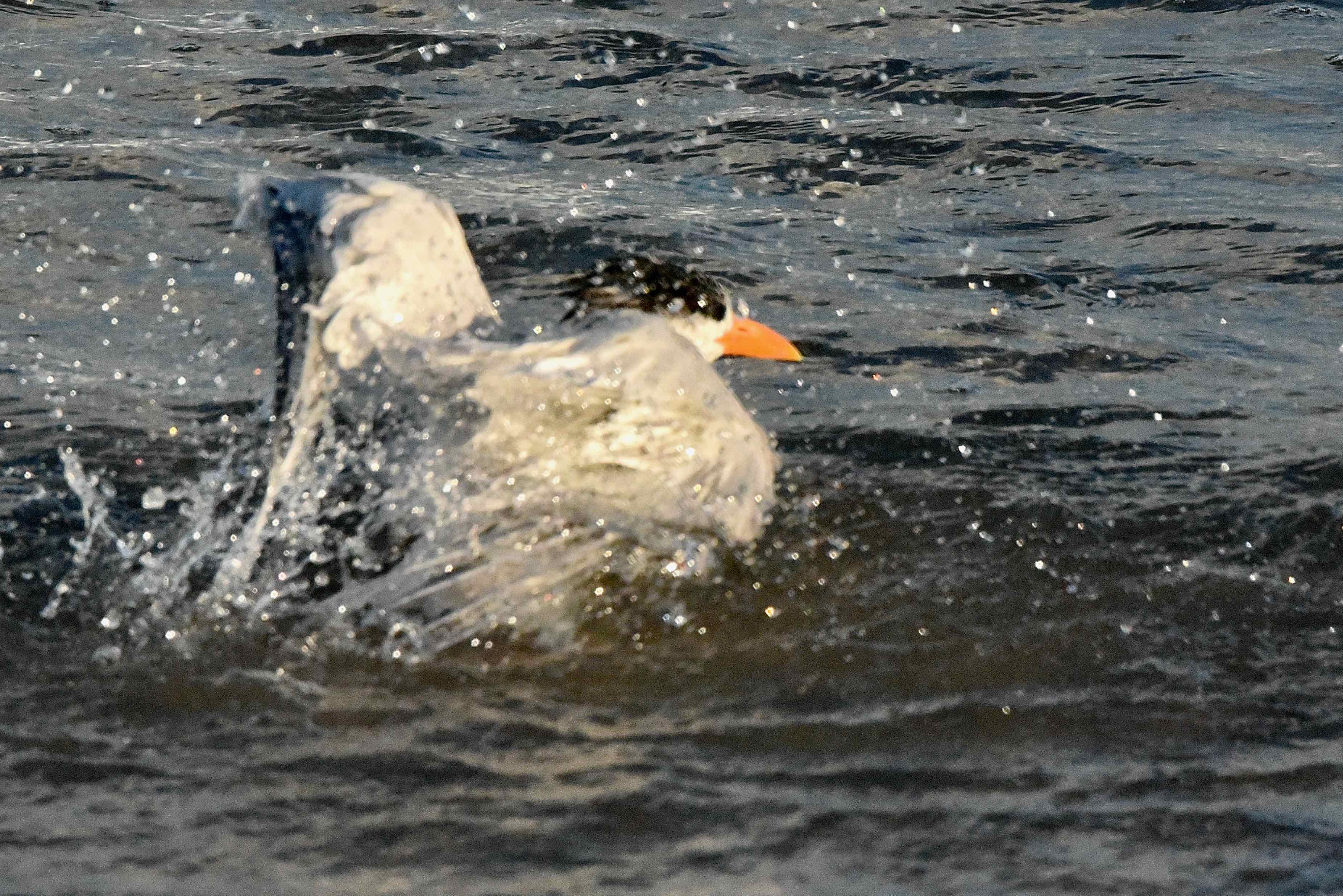
Second photo shows a royal tern bathing in the surf. We try to capture the basic form of the birds we photograph, which is important for identifying them. Also important is to show some personality, for lack of a better word, something besides the bird standing on the beach. The bird behaving in some manner. This photo does that and does it with the brilliant light of the golden hour.

The photos above were all taken within our backyard using a new piece of equipment, a ring light for macro photography that attaches to the end of the lens. In a literal sense all these photos were taken in a new light. But that new light helped reveal details that wouldn't have seen otherwise. By the way, the tropical orb spider is a repeat species from 2022' edition of favorite photos, and no doubt a descendant from that spider. We tried the same technique with a silver argiope we found in our yard, but without success. And yes, we do live in a spidery place!
Blue Spring: An Owl but No Manatee

We spent three days camping at Blue Spring State Park in May, and even at that late date we saw a few manatees and took a few shots at getting a decent shot of them, photographically speaking. We did not succeed. The trip confirmed our suspicion that it is difficult to impossible to get a clear photograph of a manatee unless you're in the water and possess a decent underwater camera. We do not.
This doesn't mean we came away from Blue Spring empty-handed. Check out the page linked above to see a sampling of the many photos we took. Our favorite? Toss-up between the white-tailed deer featured as our "cover photo" for our Blue Spring page or a barred owl that we found in the woods along the upper run. By a hair, or a feather, it's the barred owl.
This doesn't mean we came away from Blue Spring empty-handed. Check out the page linked above to see a sampling of the many photos we took. Our favorite? Toss-up between the white-tailed deer featured as our "cover photo" for our Blue Spring page or a barred owl that we found in the woods along the upper run. By a hair, or a feather, it's the barred owl.
Published by Wild South Florida, PO Box 7241, Delray Beach, FL 33482.
Photographs by David Sedore. Photographs are property of the publishers and may not be used without permission.

